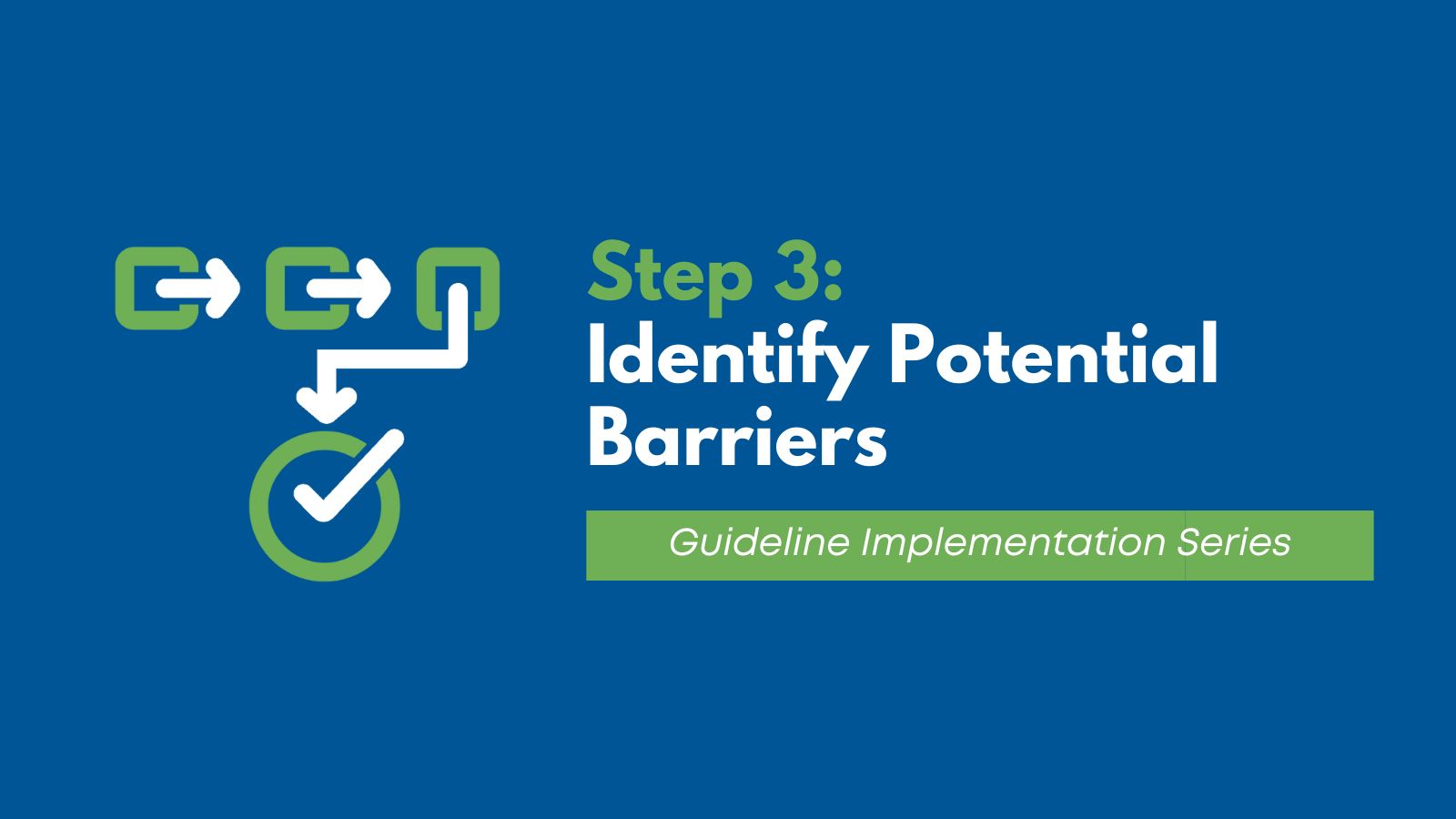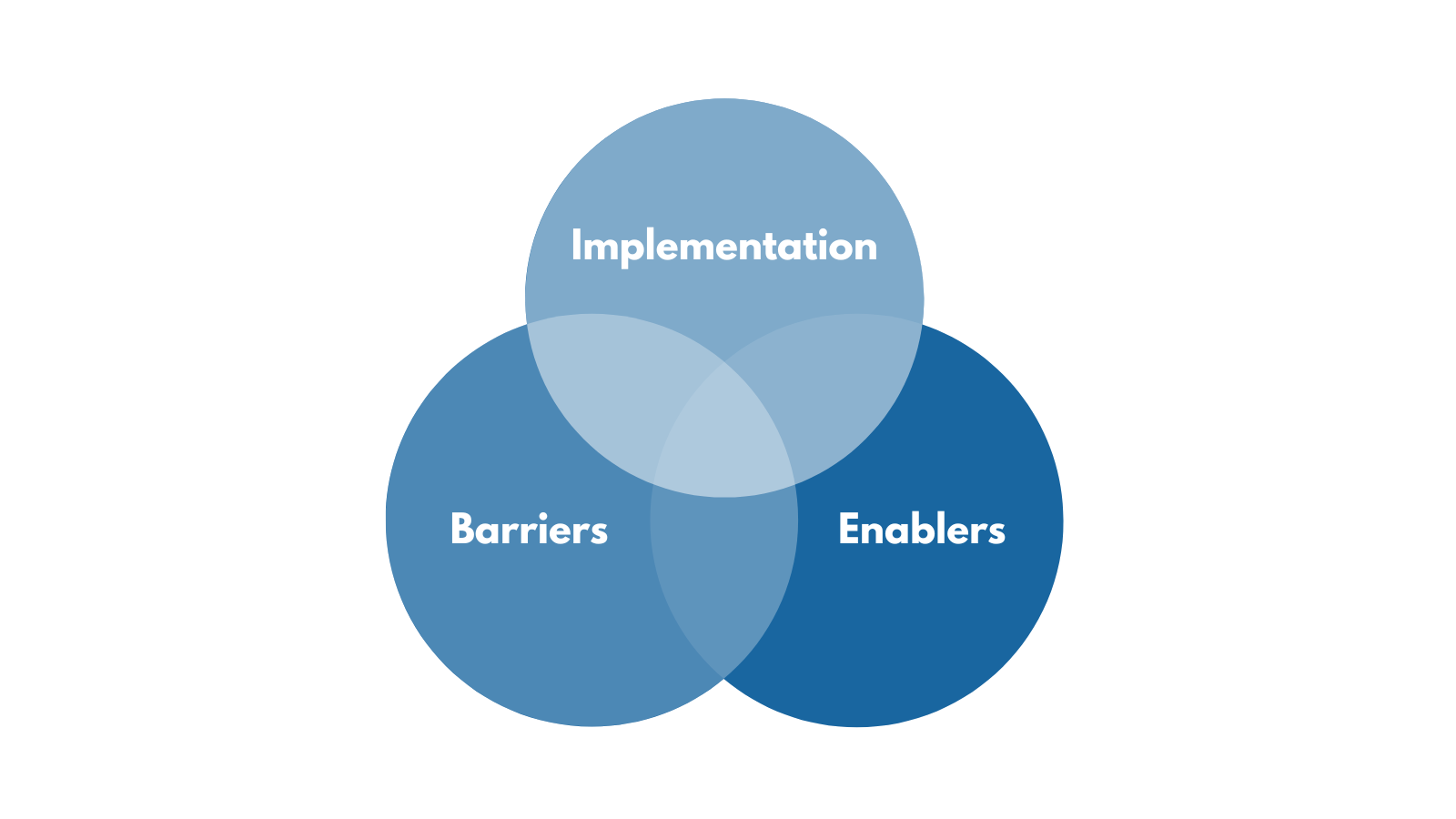
Through Step 2 you’ve now collected data about your organization relevant to the recommendation you want to implement.
Getting to know the current state of your institution is foundational for implementing your chosen recommendation, but so is having a shared structure for change when beginning the transformation process. Consequently, Step 3 is where we address what barriers and enablers you could face during implementation.
Barriers to change are often displayed as reluctance or resistance to change. The reasons why people are reluctant to accept and implement a new recommendation can range from personal to procedural. Understanding and acknowledging barriers is essential in the adoption of new clinical standards.
| Barrier | Providers Might Say or Feel: |
|---|---|
| Hospital Culture | My hospital/ company is not open to making changes. |
| Clinical buy-in | I do not believe this will improve patient outcomes. |
| Specificity | The recommendation is too weak, conditional, or otherwise not actionable. |
| Awareness | I didn’t know that was a guideline. No one told me we were using this. |
| Familiarity | I don’t know what’s inside the guideline. I don’t understand the recommendation. |
| Necessity | The recommendation does not address my patient population and/or specific patient comorbidities. |
| Resources | I do not have the time to implement the recommendation(s). I do not have the resources required. |
| Access | Workflow issues restrict viewing and easily using recommendation. |
| Collaboration or Continuity of Care | Implementation of the recommendation requires the action of other colleagues, and they are unwilling or unable to do their part. |
What can be done to mitigate those barriers and increase reception and adherence to your new recommendation? Enablers. If done, these things will make the implementation easier for staff and safer for patients.
- Establishment of an advocating committee with high-level clinical involvement.
- Involvement of early adopters and champions eager to establish the recommendation.
- Selection of an implementation strategy that involves small changes over time.
- Creating small goals for individual teams with measurable outcomes.
- Well-defined roles and responsibilities throughout the process.
- Effective communication strategies in place for ongoing use and issue resolution.
- Patient engagement and transparency, where applicable.

Begin a purposeful investigation into what barriers and enablers are specific to your practice or organization now. In Step 4, we will continue to partner with you in designing a unique implementation plan for your new recommendation to provide further insights and actionable items.
Copyright © 2023 Guideline Central, All rights reserved.